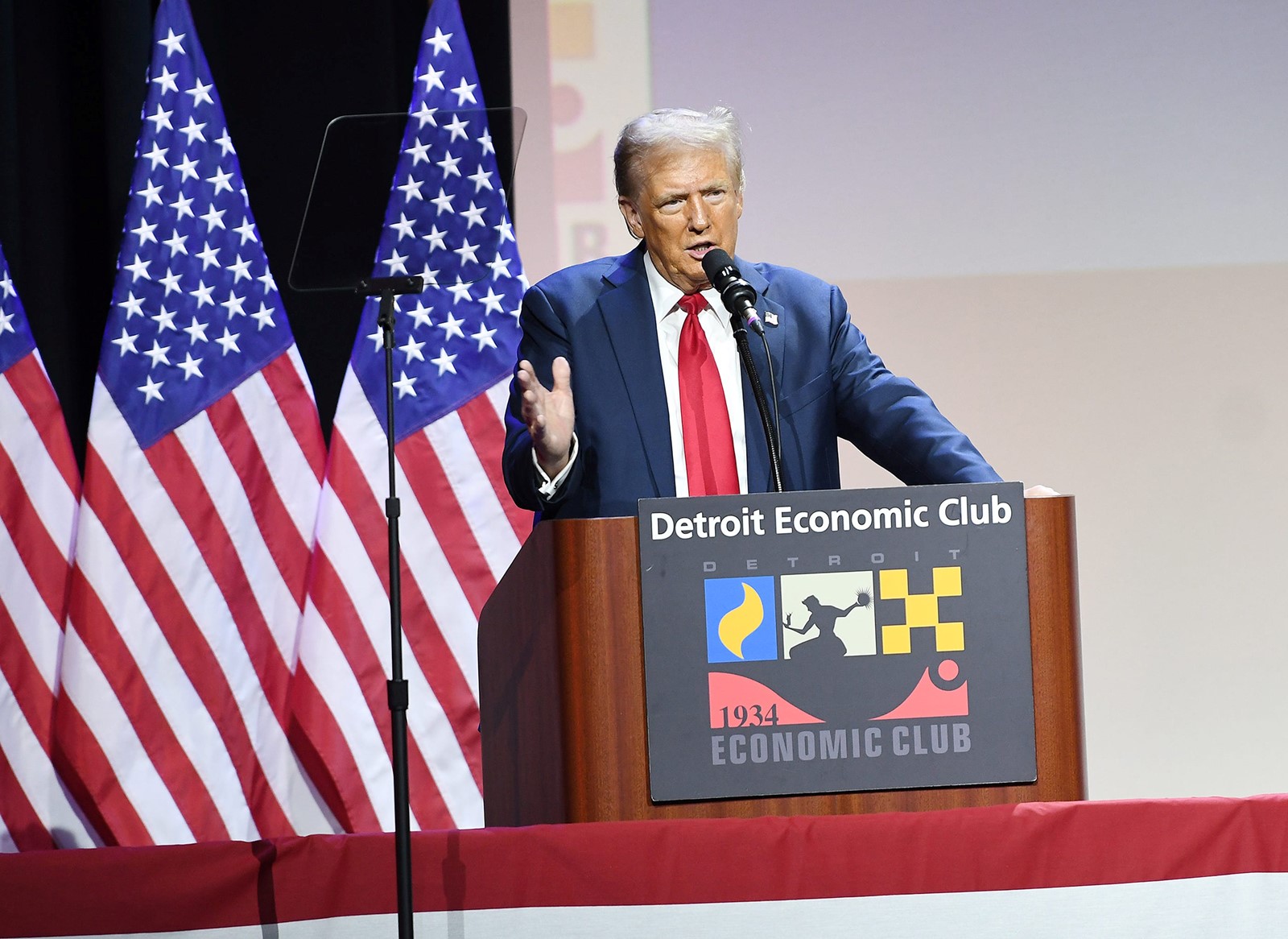
A Trump-backed tax holiday on auto loan interest payments could save middle-class Americans several hundred dollars apiece on new U.S.-built vehicle purchases through 2028, according to industry experts.
The break comes via a provision in the Republicans’ One Big Beautiful Bill Act, a massive tax cut and spending package signed into law by President Donald Trump on July 4.
“Auto buyers got an above-the-line tax deduction. That’s a rare beast in the zoo of tax policies,” economist Patrick Anderson said. He also called it a “sharp U-turn in auto tax policy” from the Biden era, which featured electric vehicle credits used by more affluent customers.
There are strings attached to the provision, so not all customers and not all vehicles will qualify. But automakers and analysts alike have cheered the policy change as one that will benefit the working class and nudge buyers toward built-in-America vehicles.
“For the subset of taxpayers that are employed, earn between $50,000 and $100,000 in salary, and are ready to buy a new car, this could reduce their cost by between $300 and $900 per year, and for heavy borrowers, over $1,000 per year,” Anderson’s firm, the Lansing, Michigan-based Anderson Economic Group, wrote in an analysis of the new policy.
A separate analysis by automotive and industrial consultancy AlixPartners estimated similar benefits of up to $800 in each of the first and second years of auto loans when interest payments are highest, with total savings of approximately $3,000 over the full term of a given loan. The analysis also suggested that about 1.8 million borrowers per year could benefit.
“While the auto-loan interest deduction for domestically produced vehicles would of course benefit consumers directly, this measure could help out automakers and dealers as well — if it nudges affordability upward and helps sustain demand. The proof, as always tough, will be in the final pudding,” said Akshay Baliga, a director in the automotive and industrial practice at AlixPartners.
Trump promised the auto loan tax break on the campaign trail last year, including during a speech to the Detroit Economic Club in October. At the time, he said the tax policy would help both automakers and consumers dealing with high prices across an industry that was “going out of business.”
Since then, Michigan U.S. Rep. Bill Huizenga, a Republican, has been a champion of the policy in Congress. He introduced a bill on the topic in May titled the “Made in America Motors Act,” which was later folded into the Republicans’ broader budget package.
“Thanks to the No Tax on Auto Loan Interest included in the One Big Beautiful Bill, millions of Americans will find it more affordable to finance the purchase of a new car, minivan, truck, or SUV that is assembled in the United States,” Huizenga said in an emailed statement.
He added: “By reducing the federal tax burden by up to $10,000, this provision provides substantial relief to hardworking Americans, not just here in Michigan but across the nation, who have suffered from years of Bidenflation. Importantly, this provision will also spur on Michigan’s automotive sector and strengthen the good-paying jobs it supports across our state.”
The White House has given the auto loan tax break top billing in promoting the legislative package, touting it in social media posts alongside wider-reaching “no tax on tips” and “no tax on overtime” policies.
The average MSRP of a new vehicle in June was $51,124, according to Kelley Blue Book. That is the second-highest on record behind December 2024 ($51,990).
Policy basics
The provision applies “above the line,” meaning that eligible tax filers will be able to take advantage of the break, even if they claim the widely used standard deduction on their annual federal submission.
Individuals earning less than $100,000 in modified adjusted gross income and couples earning less than $200,000 can get the full benefit of the tax break, but it gradually phases out for higher-income filers.
Anderson advised potential buyers to confirm their MAGI before making a purchase, since it tends to be higher than the more commonly known AGI. The Internal Revenue Service explains the difference on its website. The economist also advised buyers to double-check with dealers on where vehicles were assembled, since manufacturers often have different assembly locations for different trims of the same model.


 PREVIOUS ARTICLE
PREVIOUS ARTICLE
